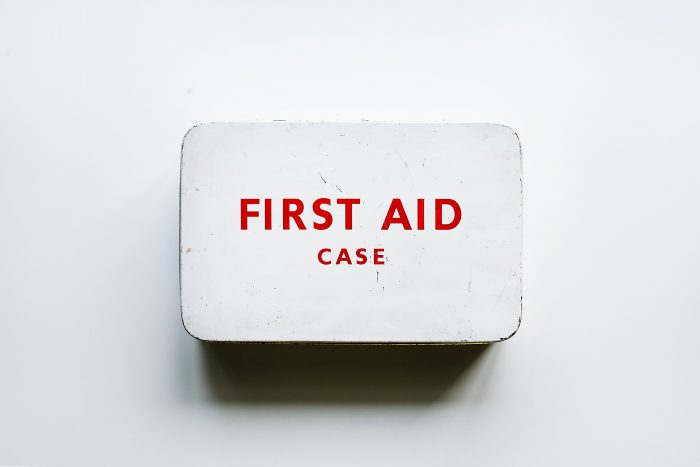I’ve had some really bad days.
That’s to be expected since I’ve run a business for over twenty years. We’ve had lost shipments, emergency surgeries, and ice storms that have knocked out power for days. I once had to finish a major sales event after learning about the heartwrenching suicide of our most loyal clients minutes earlier.
Yet, my story isn’t unique. We all have to deal with major life issues. Sometimes it’s when a personal emergency impacts our professional life. Other times it’s a business failure that’s completely out of our control. Either way, it can be extremely challenging to put customers first when we’re in the middle of a crisis.

It’s not an overstatement to say that customers need to be the focal point of any business. Simply put, there is no business without customers. However, this can be extremely challenging on our hardest days. Instead of waiting for the next emergency to happen, spend a little time pondering how to keep customers a priority every day.
It Starts with Our Workforce
We’ve all encountered that employee. The one that’s angry, frustrated, and doesn’t care who knows it. The person who clearly wants to be anywhere other than performing their job.
Maybe that person is just having a bad day. Or maybe their stress is related to a bigger problem and we need to take a look at our company culture and whether or not our entire workforce understands the role customer service and satisfaction plays in our overall success.

Each business is unique and will need to analyze specific factors within their business. Be prepared to take action in the areas that are most important, including inequality and wages. For example, Hired gave 60% of its employees a raise to close wage gaps after an internal review showed wage discrepancies:
“That year we spent over $2 million to remove unjustifiable pay gaps where they existed and to ensure that all of our employees were compensated fairly regardless of gender, race, or sexual identity.”
We can’t make everyone happy all of the time. That goes for both our workforce and our customers. Yet, we can make changes to improve our company culture and strive to be a place where employees are treated well. Hopefully, with the right planning, they will have the tools, support, and focus to keep customers at the forefront even on their worst days.
Create Emergency Plans in Advance
I am a huge advocate of pre-planning. It’s not a sexy business topic and not something most people like to think about. Yet, discussing how we will react in certain crisis situations is an essential part of keeping customers first. This generally falls into two specific categories: personal and professional emergency situations.

Personal emergencies include unexpected illnesses, transportation issues, and even life challenges like a death in the family divorce. While we’d like to keep our private life away from our professional lives, it’s not always possible. Know who would take over for any key team member in case of emergencies. Know where they keep their contact lists, what’s going on in their sales pipelines, and who can cover for them at the last minute.
All business owners have survived some kind of professional emergency, but we don’t want to wait for a crisis to happen. Instead, we should adopt the Boyscout’s “Be Prepared” motto. Here’re a few examples:
- Get the right insurance for your business (consult with a professional)
- Regularly schedule security updates and reviews (especially in areas of eCommerce)
- Have a trusted advisor or communication expert for any PR disasters
- Always have a backup plan for shipping, vendors, wholesalers, etc.
In Lessons From Lemonade – Ensuring A 3D Approach To Insurance!, Andy Hanselman explains how Lemonade can provide a quote, process a claim, and pay via their app. Maybe that’s the kind of service that would make all the difference for a small business’s operations. The idea is to be proactive now to eliminate the risk an emergency situation will have on customer relations, service, and satisfaction.
Be Honest with Customers
No one likes to admit when they are wrong. No one enjoys disappointing customers, shareholders or enduring a public crisis. Yet, it happens all the time.

In 2000, Ford and Firestorm had a very public breakup after 200 deaths and over 700 injuries from faulty Firestone tires on Ford vehicles. In The Ford-Firestone Controversy: What Happened, Peter Mackinnon describes the scandal like this:
“What ensued was the most uncomfortable game of corporate blame table tennis ever witnessed. It went something like this:
Ford executive: ‘Firestone did it.’
Firestone executive: ‘No, Ford did it.’
Ad infinitum.”
No one has ever taken responsibility for what happened. For legal reasons, the parties most likely cannot accept blame. This is a very extreme example of a business crisis, but the lessons are the same. Customers understand spin. Unless we are bound by legal issues, be honest with customers. More importantly, we can explain how we’re going to fix the problem. Most customers will understand and appreciate our honesty.
The Harsh Realities of Business Life
Nothing I ever learned in business school prepared me for the harsh realities of running a business. No one ever talks about how one phone call can change our lives forever. We don’t teach skills like resilience, managing strong feelings, or flexibility. And we don’t discuss how many times a day something from our personal life bleeds into our business life.

However, our business life doesn’t exist in a vacuum. We’re humans first, business people second. By definition, that means we’re not immune to having extremely difficult working days. It doesn’t matter whether it’s a personal or business crisis, we still need to manage a (hopefully) successful business. It’s on those days that we need to remember to keep our customers first.
And we can’t wait until a hard day to start the conversation.



